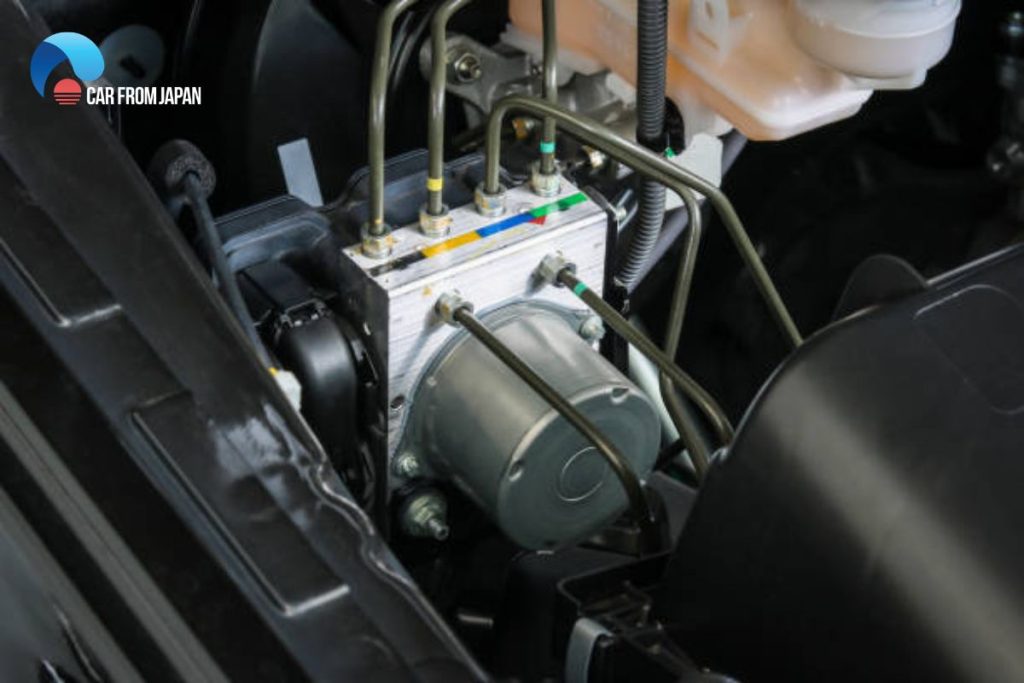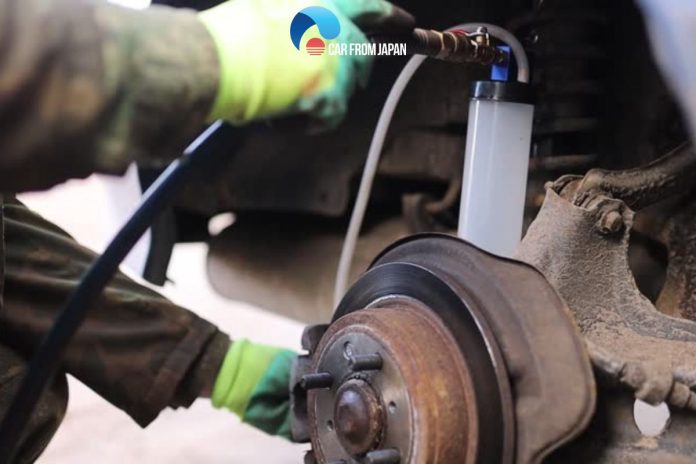Want to make sure your brakes are working their best? Bleeding your ABS is an important part of regular maintenance. This guide will teach you how to bleed ABS brakes yourself with and without scan tools, saving you time and money.
Contents
The Necessity of ABS Brake System Bleeding
We’ve already mentioned that the system needs bleeding due to air bubbles in the system. But how do these air pockets form inside the system?
Well, every time the brake lines are open for repairing or changing some parts such as the wheel cylinders, calipers, or ABS units, some air gets into the system.
When there are air pockets inside the lines, the brake pedal feels spongy and the entire system feels imbalanced. For this reason, bleeding the brakes is mandatory for any brake work.
Skipping it would cause various brake issues after a while because without bleeding, you not only let the air pockets stay but also push contaminants through the system.
Flushing the brake fluid every two to three years is a part of the regular maintenance schedule. Doing so will keep the system free of contaminated fluid and air bubbles.
How Bleed ABS Brakes: A Technique For All Types of Units
Bleeding involves flushing the air pockets out and replacing the old fluid. The old fluid needs to be changed because polluted fluid absorbs air, moisture, and lowers its boiling point. Such degradation affects braking performance.

Things you’ll need
- A few 8-ounce brake fluid cans
- Plastic tubing
- Car jack and jack stands
- A turkey baster
- A box wrench
- Rags or microfiber towels
- Spacer
- A small bottle
- Protective gloves and goggles
The procedure of how to bleed ABS brakes
Before getting on with detaching bolts and loosening nuts, you will need to prepare for bleeding the brakes. It includes jacking up the vehicles and removing all four wheels.
You can also work with keeping the wheels on but raise the vehicle high enough so that you can swing a wrench on the bleeder valves.
Loosen the bleeder valves
After preparing the vehicle, your first task is to loosen the bolts of the bleeder valves. Use a box wrench for the job. If the bolt joints seem rusty, you should spray some penetrating oil the previous day.
Doing so will make the job easier as you can break off the corrosion by some light taps from a hammer.
Be careful when doing this because these little hollow bolts can snap off if you apply excessive force.
If this happens, you will need to replace the wheel cylinders or brake calipers (depending on the vehicle model), which means wasting more money and time.
Loosen the bolts carefully so that they don’t break off. Leave them closed without removing them completely. Let’s move to the next step of how to bleed ABS brakes.
Remove the old fluid
Use the turkey baster to flush out the old fluid and deposits from the master cylinder reservoir. Use a lint-free cloth to remove the sludge from the reservoir.
Be extremely cautious when dealing with brake fluid because it is corrosive. Accidental spillage on any painted surface will dissolve the paint immediately.
You should also wear gloves so that it does not touch your skin.
Bleed the ABS system

Take a piece of plastic tubing (any kind of cheap tube is fine) and push its one end over the brake bleeder bolt.
Another end will go into a small bottle filled with one or two inches of fresh brake fluid. This small trick will prevent air from getting back into the caliper or brake cylinder.
Upon releasing the line pressure, the pedal will be displaced from its position. To prevent that, put a spacer under the pedal. Then, fill the master cylinder reservoir with new, clean fluid and close its opening by putting the cap back on.
Otherwise, each time you release the pedal, fluid will spurt out through the reservoir opening.
At this stage, ask them to depress the brake pedal with a force that you would apply to stop the vehicle from moving at a traffic light. Tell them to keep the pressure on while you turn the bleeder bolt a quarter.
Doing so will force some polluted fluid to come out through the tubing end that goes down to the bottle. Close the bleeder when the dripping stops completely. Then, ask the helper to take the pressure off the pedal.
This is how to bleed ABS brakes. However, you are not finished yet. Repeat this process until you see clean fluid coming out of the bleeder.
After that, tighten the bleeder bolt and move to the next wheel to repeat this same procedure.
During this whole process, keep filling up the reservoir with fresh fluid. Never let the fluid level drop below half of the reservoir tank. Otherwise, air can get into the master cylinder.
Also, you should skip none of the bleeding steps because that may suck air into the caliper.
Bleeding with a scan tool
Many ABS modulators are not equipped with bleeders. In that case, use a scan tool to cycle the pump and valves. How to bleed ABS brakes with a scan tool?
The scan tool is mainly required for activating the pump and cycling the valves to bleed out these areas.
For instance, the EBC 310’s Ford version requires an NGS scan tool for the bleeding. This tool helps with cycling the dump valves and activating the pump so it becomes possible to bleed these areas.
Check out this video from Slip Fit Garage to learn how to bleed ABS brakes with an affordable ABS scan tool like a pro scanner!
FAQs
How does air get into an ABS module?
Leaks in the ABS seals or hoses can allow air to enter the system. When fluid leaks out, it creates a vacuum that draws air in.
Do you need a scanner to bleed ABS brakes?
While manual bleeding is the standard method for most brake systems, using a diagnostic scan tool can significantly improve the results when bleeding ABS brakes.
What kind of scan tool do I need to bleed ABS brakes?
You’ll need a scan tool capable of communicating with your vehicle’s ABS module. Many OBD-II scanners have this functionality, but check the tool’s specifications to be sure.
How often should I bleed my ABS brakes?
There’s no set interval for bleeding ABS brakes. It’s typically done during regular brake service or if you experience symptoms like spongy brakes, ABS warning lights, or reduced braking performance.
Is it safe to bleed ABS brakes myself?
As long as you follow proper safety precautions and have the necessary knowledge, bleeding ABS brakes can be done safely. Always consult your vehicle’s repair manual and wear appropriate safety gear.



